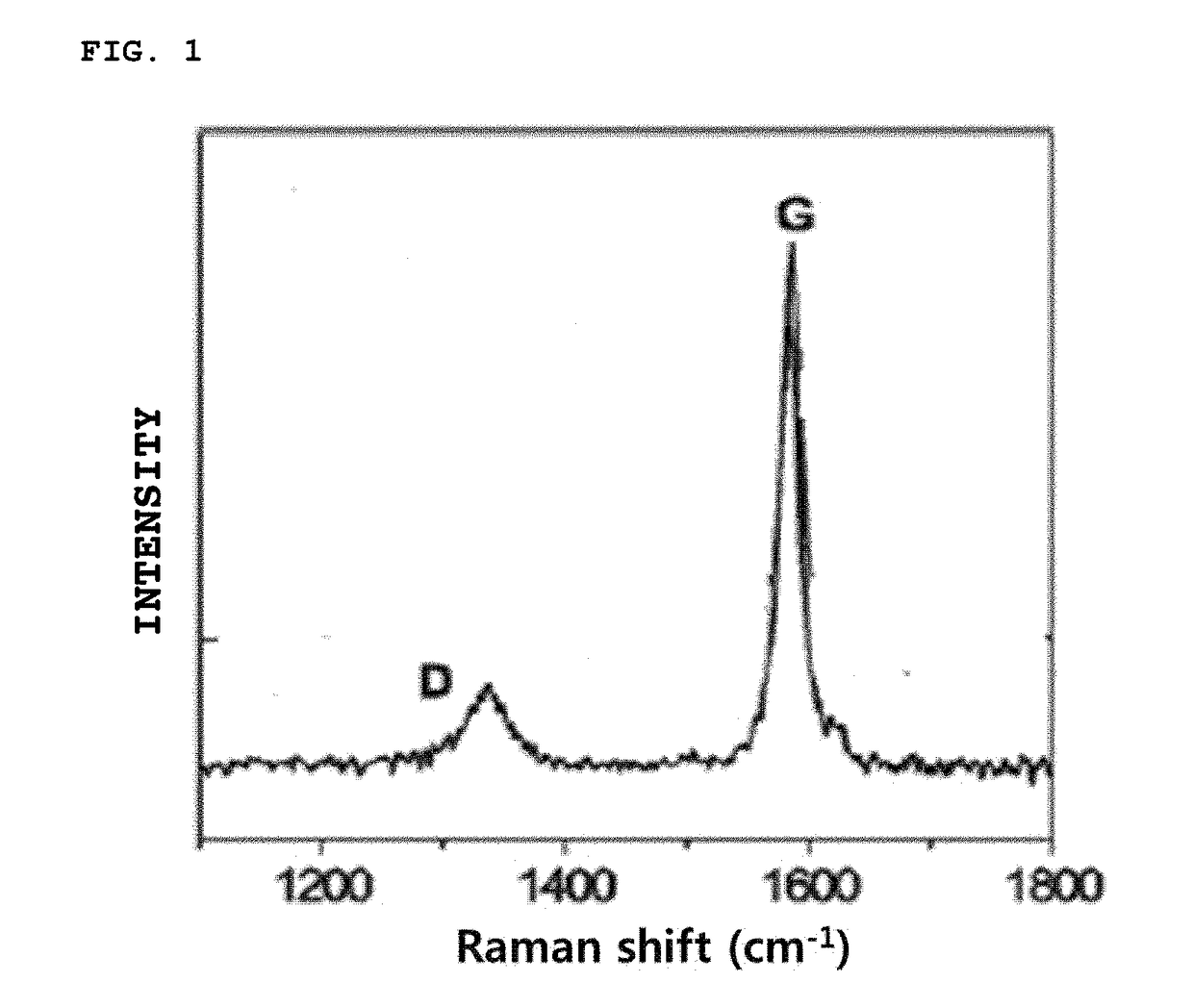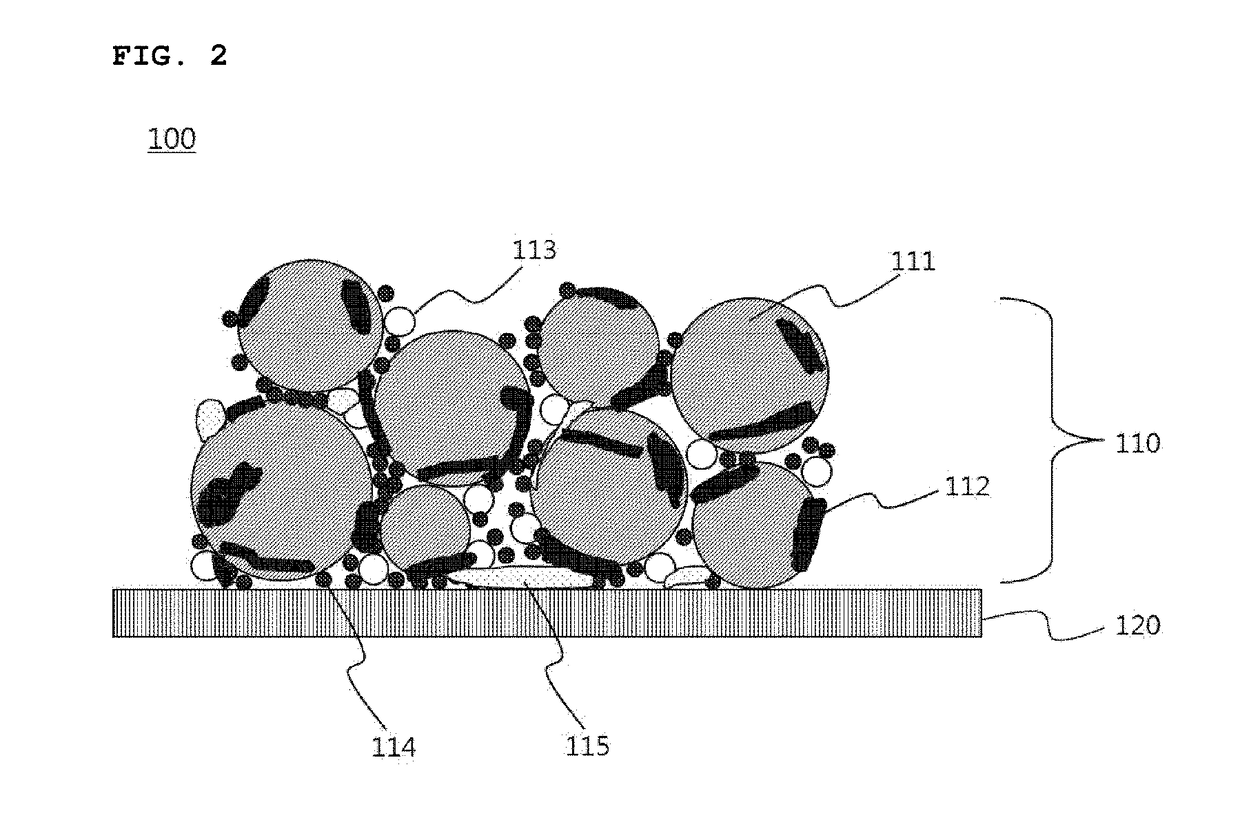Negative electrode active material for lithium secondary battery and method of preparing the same
a secondary battery and active material technology, applied in the field of negative electrode active material for lithium secondary batteries, can solve the problems of graphite-based active material destruction, battery performance may be significantly degraded, and the active material of propylene carbonate may not be able to meet the requirements of lithium secondary batteries, so as to reduce side reactions and improve the low-temperature performance and initial efficiency of lithium secondary batteries.
- Summary
- Abstract
- Description
- Claims
- Application Information
AI Technical Summary
Benefits of technology
Problems solved by technology
Method used
Image
Examples
example 1
on of Negative Electrode Active
Material for Lithium Secondary Battery
[0087]After 5 g of graphite (ID / IG ratio=0.134, d50=19 μm, Brunauer-Emmett-Teller (BET)=2 m2 / g, tap density=0.95 g / cc) was mixed with 100 mk of a 1% (w / v) Li CO3 aqueous solution and stirred for 30 minutes at 30° C., the stirred mixture was filtered under reduced pressure.
[0088]A product obtained by the filtration was dried in a vacuum oven at a temperature of 100° C. for 24 hours to prepare graphite having an alkali carbonate layer formed on the surface thereof.
example 2
on of Negative Electrode Active
Material for Lithium Secondary Battery
[0089]Graphite having an alkali carbonate layer formed on the surface thereof was prepared in the same manner as in Example 1 except that graphite (ID / IG ratio=0.226, d50=22 μm, BET=3.8 m2 / g, tap density=1.05 g / cc) was used instead of the graphite of Example 1.
example 3
on of Negative Electrode and Lithium Secondary Battery
[0090]
[0091]The graphite having an alkali carbonate layer formed on the surface thereof, which was prepared in Example 1, as a negative electrode active material, super C65 (Timcal) as a conductive agent, and polyvinylidene fluoride (PVdF), as a binder, were mixed in a weight ratio of 94:1:5 in N-methylpyrrolidone (NMP), as a solvent, to prepare a uniform negative electrode active material slurry.
[0092]After one surface of a copper current collector was coated with the prepared negative electrode active material slurry to a thickness of 65 μm, dried, and rolled, the coated copper current collector was punched into a predetermined size to prepare a negative electrode.
[0093]
[0094]A Li metal was used as a counter electrode, a polyolefin separator was disposed between the negative electrode and the Li metal, and a coin-type half cell was then prepared by injecting an electrolyte solution in which 1 M LiPF6 was dissolved in a solvent ...
PUM
| Property | Measurement | Unit |
|---|---|---|
| thickness | aaaaa | aaaaa |
| particle diameter | aaaaa | aaaaa |
| temperature | aaaaa | aaaaa |
Abstract
Description
Claims
Application Information
 Login to View More
Login to View More - R&D
- Intellectual Property
- Life Sciences
- Materials
- Tech Scout
- Unparalleled Data Quality
- Higher Quality Content
- 60% Fewer Hallucinations
Browse by: Latest US Patents, China's latest patents, Technical Efficacy Thesaurus, Application Domain, Technology Topic, Popular Technical Reports.
© 2025 PatSnap. All rights reserved.Legal|Privacy policy|Modern Slavery Act Transparency Statement|Sitemap|About US| Contact US: help@patsnap.com



